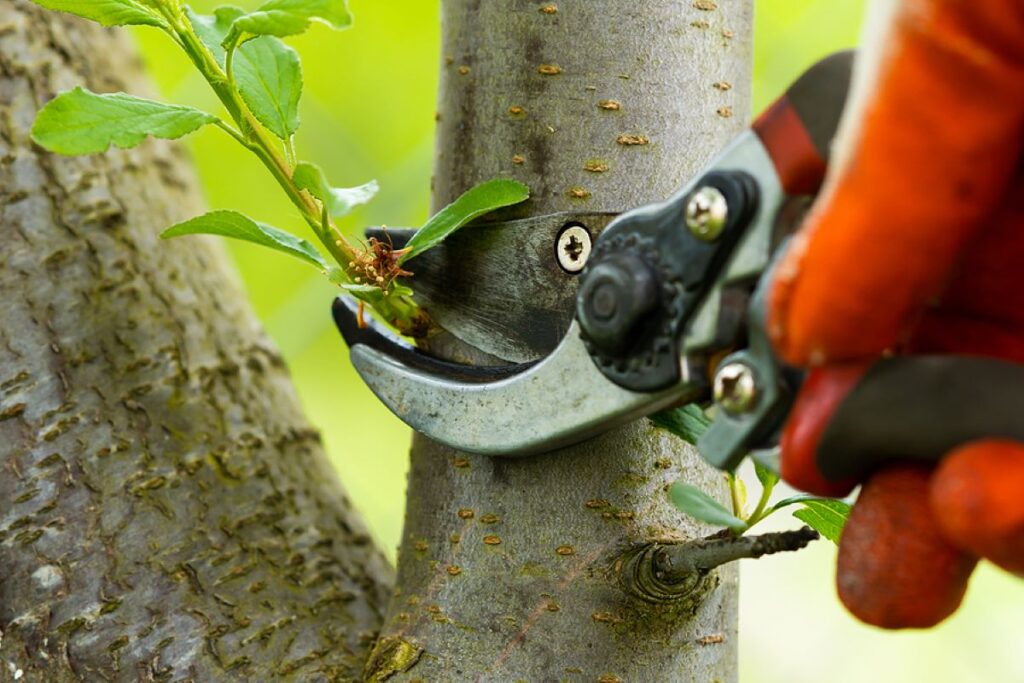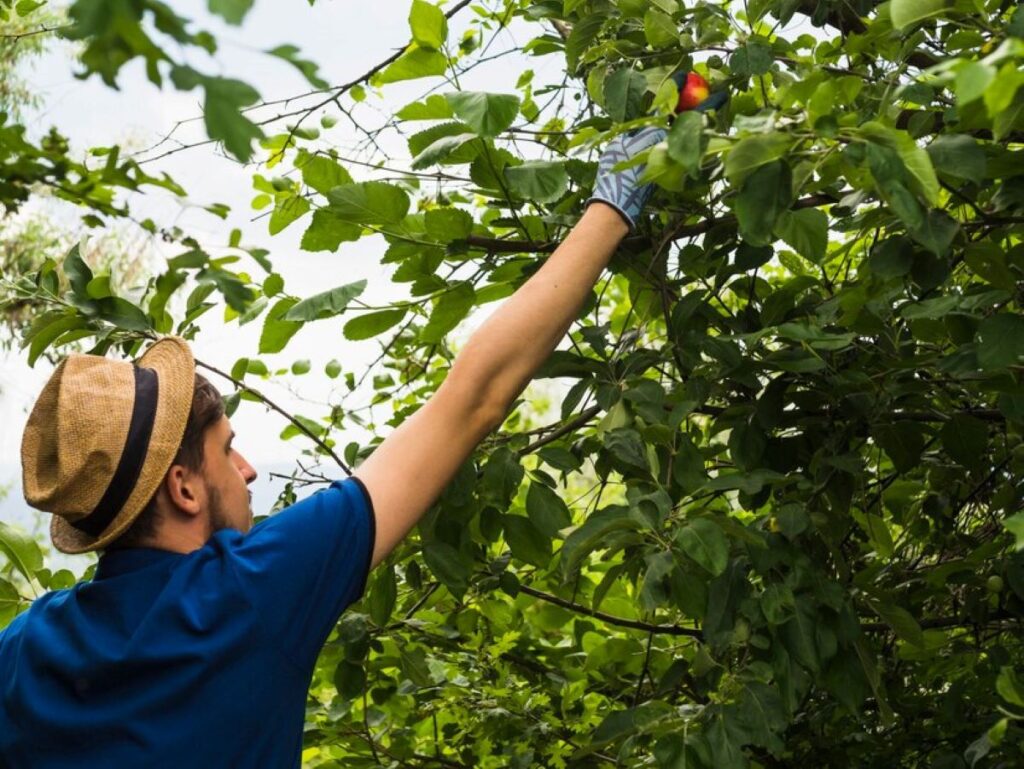Tree pruning is an essential aspect of maintaining the health and aesthetic appeal of trees in residential and commercial landscapes. While many homeowners recognise the importance of this practice, the cost associated with tree pruning can vary significantly. Understanding the factors that influence these costs can help property owners make informed decisions and budget appropriately for their tree care needs.
Understanding Tree Pruning
Tree pruning involves the selective removal of certain parts of a tree, such as branches, buds, or roots, to enhance its health, shape, and growth. This practice not only improves the tree’s appearance but also promotes better air circulation and light penetration, which are vital for its overall health. By ensuring that the tree receives adequate sunlight and airflow, pruning can significantly reduce the risk of fungal infections and pest infestations, which often thrive in dense, shaded environments.
Types of Pruning
There are several types of pruning techniques, each serving different purposes. These include:
- Thinning: This technique involves removing specific branches to reduce the density of the tree’s canopy, allowing more light to reach the inner branches and the ground.
- Reduction: Reduction pruning aims to decrease the height or spread of a tree while maintaining its natural shape.
- Cleaning: This involves removing dead, diseased, or damaged branches to improve the tree’s health and appearance.
Benefits of Tree Pruning
Regular pruning offers numerous benefits. While the tree pruning cost may vary depending on the size and condition of the tree, it’s a worthwhile investment that can enhance the aesthetic appeal of a landscape, improve tree health by removing diseased or dead branches, and reduce the risk of falling branches during storms. Moreover, proper pruning can encourage new growth and flowering, making trees more vibrant and attractive. Additionally, pruning helps shape young trees, guiding their growth to prevent structural issues as they mature. This proactive approach not only ensures the longevity of the tree but also contributes to the overall safety of the surrounding area, especially in urban environments where space is limited.
Furthermore, tree pruning can play a crucial role in the management of fruit-bearing trees. By strategically removing certain branches, gardeners can enhance fruit production and quality, allowing for better sunlight exposure and air circulation around the fruit. This practice not only maximises yield but also improves the flavour and size of the fruit, making it more desirable for consumption. In essence, understanding the nuances of tree pruning can lead to healthier trees and more fruitful harvests, benefiting both the environment and those who enjoy the fruits of their labour.
Factors Influencing Tree Pruning Costs
Several factors can affect the cost of tree pruning. Understanding these elements can help property owners anticipate expenses and make informed decisions regarding their tree care.
Tree Size and Height
One of the most significant factors influencing pruning costs is the size and height of the tree. Larger trees require more time, effort, and specialised equipment to prune safely and effectively. For instance, a small ornamental tree may cost considerably less to prune than a towering oak or a mature sycamore.
In addition to the tree’s height, its overall size and canopy spread can also impact costs. A tree with a wide canopy may require more extensive work to ensure balanced pruning, which can increase labour time and, consequently, the overall cost.

Tree Species
The species of the tree plays a crucial role in determining pruning costs. Some species are more challenging to prune due to their growth patterns, branch structure, or wood density. For example, hardwood trees like oak or maple may require more effort to prune than softer woods like pine or birch. Additionally, certain species may have specific pruning requirements or best practices, which can further influence the cost.
Location and Accessibility
The location of the tree can significantly affect the cost of pruning. Trees situated in hard-to-reach areas, such as near power lines, buildings, or steep slopes, may require specialised equipment or additional safety measures. This can lead to increased labour costs as arborists may need to employ cranes, ropes, or other equipment to safely access and prune the tree.
Labour Costs and Expertise
The cost of labour is another critical factor in determining tree pruning expenses. Experienced and qualified arborists often charge higher rates due to their expertise and the quality of service they provide. While it may be tempting to opt for a less experienced individual or a DIY approach, the potential risks and long-term consequences of improper pruning can outweigh the initial savings.
Certification and Insurance
When hiring a professional arborist, it is essential to consider their certification and insurance. Certified arborists have undergone rigorous training and have a deep understanding of tree biology and proper pruning techniques. Hiring a certified professional may incur higher costs, but it ensures that the job is done correctly and safely.
Additionally, reputable tree care companies carry liability insurance, which protects property owners in case of accidents or damage during the pruning process. While this may contribute to higher costs, it provides peace of mind and safeguards against potential financial liabilities.
Seasonality and Timing
The timing of tree pruning can also influence costs. Certain times of the year are more favourable for pruning, depending on the tree species and local climate conditions. For instance, late winter or early spring is often the best time to prune many deciduous trees, as they are still dormant. However, scheduling pruning during peak seasons can lead to higher prices due to increased demand for tree care services.
Additional Costs to Consider
In addition to the direct costs of pruning, there are other factors that can contribute to the overall expense. These may include:
Debris Removal
After pruning, there will often be a significant amount of debris, including branches, leaves, and wood chips. Some tree care companies include debris removal in their service packages, while others may charge extra for this service. It is essential to clarify this aspect before hiring a contractor to avoid unexpected costs.
Follow-Up Care
Post-pruning care is crucial for the health of the tree. Depending on the extent of the pruning, additional treatments such as fertilisation or pest control may be necessary. These follow-up services can add to the overall cost but are essential for ensuring the tree’s long-term health and vitality.
See Also : Choosing the Best Tree Pruning Services Near Me: Key Questions to Ask
Estimating Tree Pruning Costs
Estimating the cost of tree pruning can be challenging due to the numerous variables involved. However, property owners can take several steps to obtain accurate estimates and make informed decisions.
Getting Multiple Quotes
One of the best ways to gauge the cost of tree pruning is to obtain quotes from multiple tree care companies. This not only provides a clearer picture of the market rates but also allows homeowners to compare the services offered by different providers. When requesting quotes, it is advisable to provide as much information as possible, including tree species, size, and location, to ensure accurate estimates.

Understanding Quotes
When reviewing quotes, it is essential to understand what is included in the price. Some companies may offer lower rates but exclude important services such as debris removal or follow-up care. A comprehensive quote should detail all aspects of the service, allowing property owners to make informed comparisons.
Conclusion
Tree pruning is a vital practice for maintaining the health and beauty of trees. While costs can vary significantly based on factors such as tree size, species, location, and labour, understanding these elements can help property owners budget effectively and make informed decisions. By hiring qualified professionals and considering all aspects of tree care, homeowners can ensure their trees remain healthy, safe, and aesthetically pleasing for years to come.
Ultimately, investing in proper tree pruning not only enhances the landscape but also contributes to the longevity and vitality of the trees themselves. With careful planning and consideration, property owners can navigate the complexities of tree pruning costs and ensure their trees thrive.

